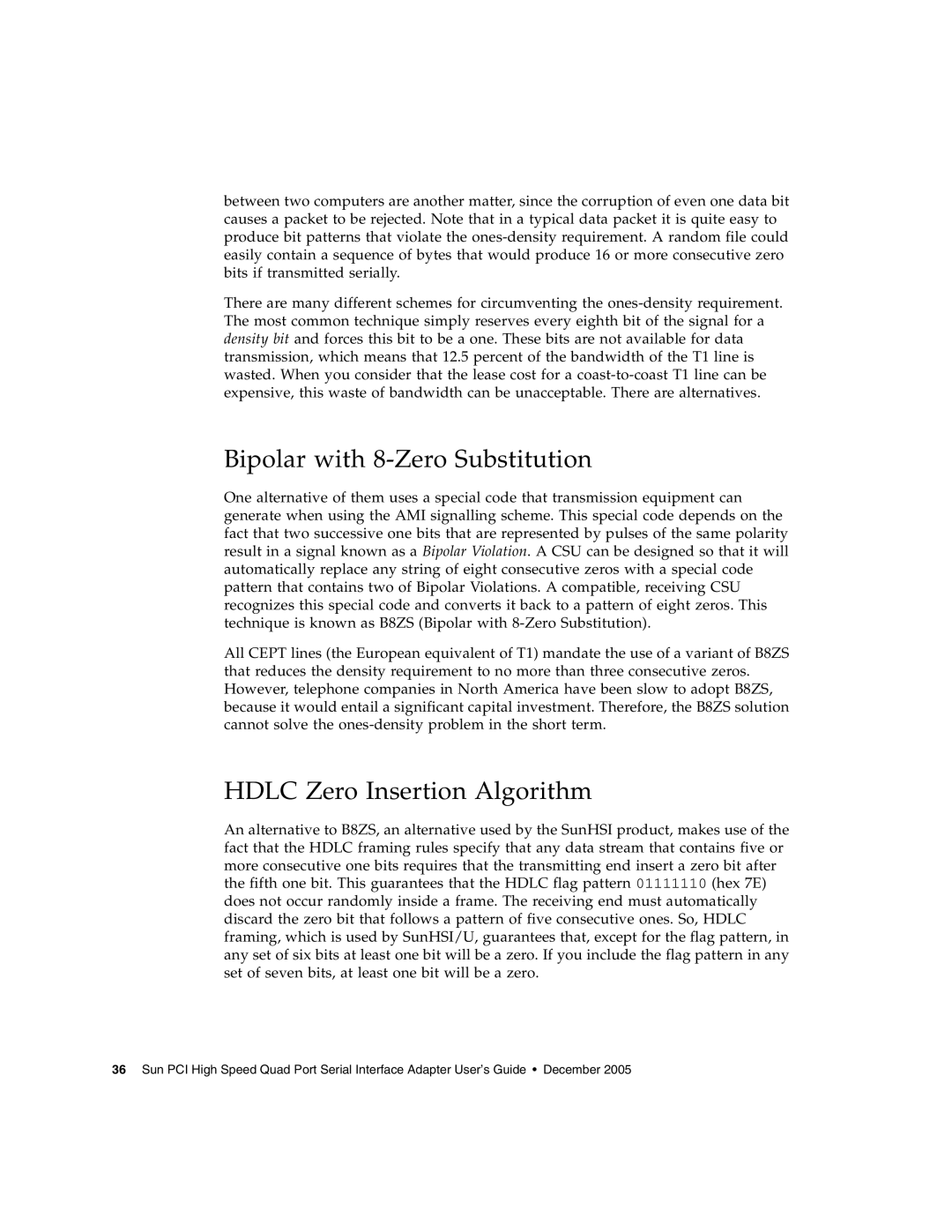between two computers are another matter, since the corruption of even one data bit causes a packet to be rejected. Note that in a typical data packet it is quite easy to produce bit patterns that violate the
There are many different schemes for circumventing the
Bipolar with 8-Zero Substitution
One alternative of them uses a special code that transmission equipment can generate when using the AMI signalling scheme. This special code depends on the fact that two successive one bits that are represented by pulses of the same polarity result in a signal known as a Bipolar Violation. A CSU can be designed so that it will automatically replace any string of eight consecutive zeros with a special code pattern that contains two of Bipolar Violations. A compatible, receiving CSU recognizes this special code and converts it back to a pattern of eight zeros. This technique is known as B8ZS (Bipolar with
All CEPT lines (the European equivalent of T1) mandate the use of a variant of B8ZS that reduces the density requirement to no more than three consecutive zeros. However, telephone companies in North America have been slow to adopt B8ZS, because it would entail a significant capital investment. Therefore, the B8ZS solution cannot solve the
HDLC Zero Insertion Algorithm
An alternative to B8ZS, an alternative used by the SunHSI product, makes use of the fact that the HDLC framing rules specify that any data stream that contains five or more consecutive one bits requires that the transmitting end insert a zero bit after the fifth one bit. This guarantees that the HDLC flag pattern 01111110 (hex 7E) does not occur randomly inside a frame. The receiving end must automatically discard the zero bit that follows a pattern of five consecutive ones. So, HDLC framing, which is used by SunHSI/U, guarantees that, except for the flag pattern, in any set of six bits at least one bit will be a zero. If you include the flag pattern in any set of seven bits, at least one bit will be a zero.
36 Sun PCI High Speed Quad Port Serial Interface Adapter User’s Guide • December 2005
